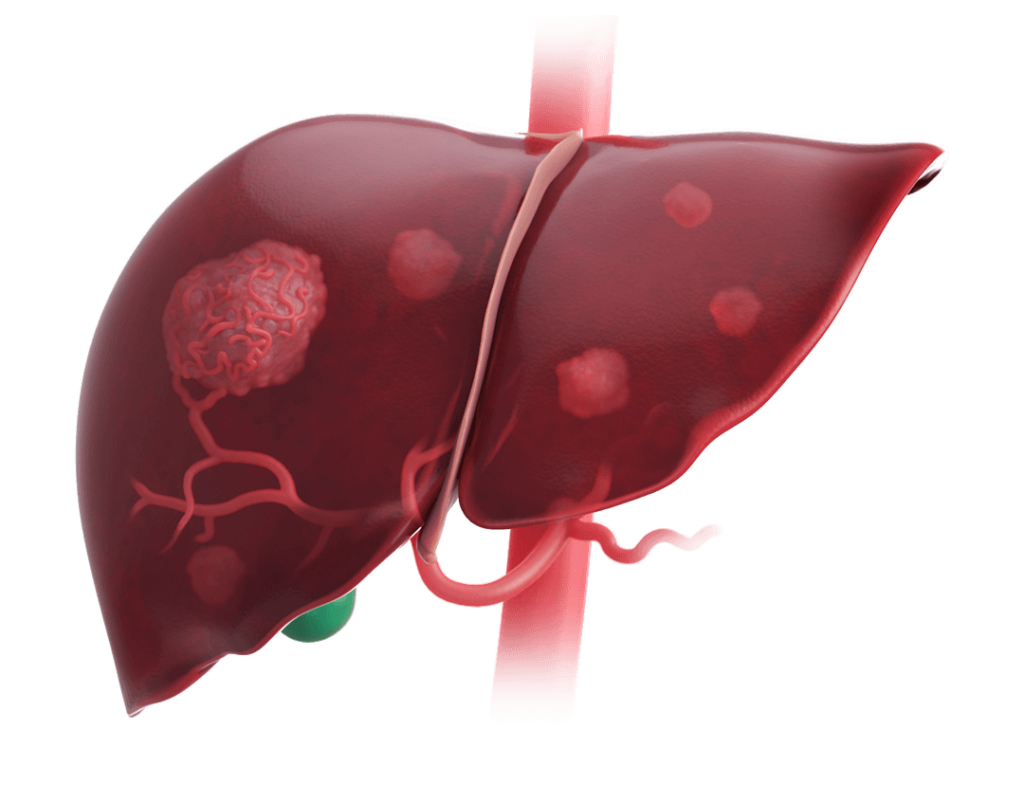
Cholangiocarcinoma is a rare and aggressive form of cancer that occurs at any point in the biliary tree. Intrahepatic cholangiocarcinoma (ICC) is located within the liver and above the secondary bile duct branches. ICC makes up 10-20% of all primary liver cancers, with approximately 3,000 new cases annually in the US.1 The incidence of ICC has been reported to be increasing wordwide.1
ICC is typically diagnosed later when the disease is in advanced stages which contributes to poor prognosis. Unfortunately, outcomes have not improved substantially in the last decade, with a 5-year survival rate of 31.1% for unresectable stage 3 and 4 ICC.2
TriSalus’ ICC clinical program is evaluating our investigational TLR9 agonist, nelitolimod (also known as SD-101), delivered deep into the vasculature of the liver tumors using our proprietary, FDA cleared device. Traditionally, TLR9 agonists like nelitolimod have not been administered intravenously but by direct injection into superficial tumors, making treatment of large or multiple tumors very difficult.
TriSalus is studying the delivery of nelitolimod directly into the arteries supplying the liver in order to distribute the drug to ICC tumors within the organ, irrespective of size, number and location of tumors. Infusion by the TriSalus device using the Pressure-Enabled Drug Delivery™(PEDD™) method improves targeted delivery of therapy into high-pressure tumors using a standard intraarterial procedure.
Because immune cells are suppressed throughout the liver and micro-metastases or undetectable additional tumors may be present, tissue that appears normal is also treated with nelitolimod. Importantly, the nelitolimod treatment is being given in combination with a systemic (or intravenous) immunotherapy to enable treatment of tumors within the liver as well as tumors that may be present in other parts of the body.
Nelitolimod is in clinical development and has not been approved in the US or globally.
Pressure-Enabled Delivery of Nelitolimod With Checkpoint Blockade for Primary Liver Tumors (PERIO-02) is an open-label, phase 1b/2 study of the pressure-enabled hepatic artery infusion of nelitolimod, a TLR9 agnonist, alone or in combination with intravenous checkpoint blockade in adults with Hepatocellular Carcinoma (HCC) and ICC.
This trial is currently recruiting. Learn more on periotrial.com.
We are studying the combination of nelitolimod with PEDD to enable immunotherapies in the liver and pancreas. Our clinical research is focused on bringing this potentially transformative treatment platform to patients.
1. Gupta A, et al. Hepatobiliary Surg Nutr. 2017;6(2):101-104.
2. Paik KY, et al. J Gastroenterol Hepatol. 2008;23(5):766-770.
We encourage you to read and evaluate terms of use, privacy, security and other similar policies of the destination site as they may differ from TriSalus’ standards.
TriSalus assumes no responsibility nor does it control, endorse or guarantee any aspect of your use of any third party sites. Additionally, the presence of this link does not imply the third party site’s endorsement of TriSalus or this website.
Thank you for visiting our site.